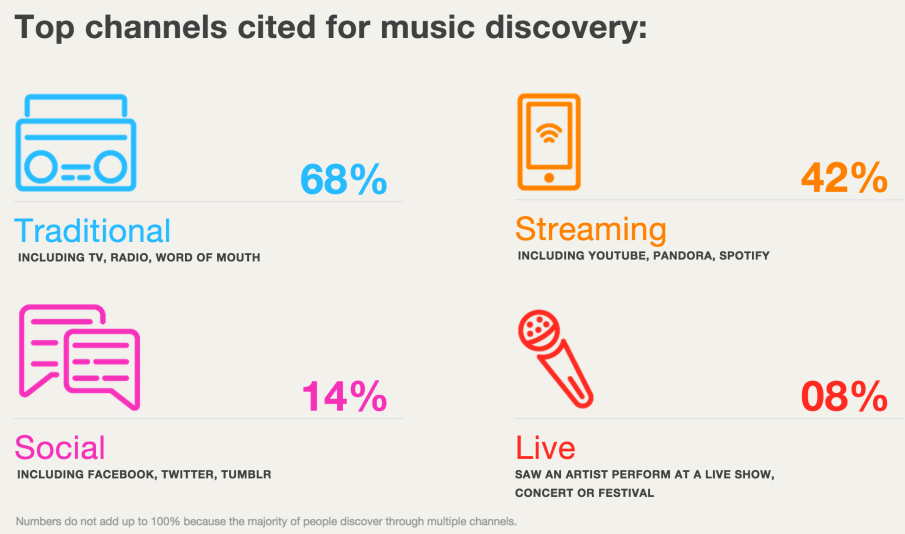With VCs and investment bankers willing to open their pockets at seemingly any online service that contains the words "music discovery" in their mission statement, it makes you wonder about the validity of the idea that it's still the holy grail for every company offering music online.
Don't get me wrong, I understand why music discovery is a hot topic. After all, if a listener can find new music that they like, they're more likely to buy or stream it, which means a potential additional income stream for all involved. At least, that's the theory.
What I'm beginning to disagree with is the idea that music discovery can be done electronically thanks to a smart algorithm that learns your tastes. Sound good on paper, but that's not actually the way that we've discovered music over the last 50+ years, or even today for that matter.
Think about how we found recent breakout artists like
The Black Keys and
Alabama Shakes. Did most people find them via a
Pandora recommendation or
Spotify? No, most people found them the same way that new artists have always been discovered for decades and decades. There was a groundswell buzz that you couldn't avoid, and it was both offline and online. When enough people begin to talk about an artist, it doesn't take long for the word to get around. Do you think that's ever happened thanks to an algorithm?
If you think about it, radio has always been the major means of music discovery - 50 years ago, and still today.
YouTube ranks as #2 at the moment. In the 60s and 70s when FM was at its peak, the disc jockeys were the unquestioned arbiters of musical taste, and we listened to their show based specifically on those tastes. We knew that whatever they played was in line with what we liked, and we were open to new suggestions as a result. This has happened a bit on the web with sites like
Pitchfork (who's influence seems to be waning a bit), but there's really been nothing like similar to the radio experience yet. We keep on waiting for the taste of a computer to take over, when it's really the human one that we crave.
Perhaps all the money chasing music discovery is just good money after bad purchasing fool's gold, because it still comes down to people talking about an act both on and offline to break it. Let's hear it for the humans, until the algorithms can prove us wrong.
----------------------------------

















